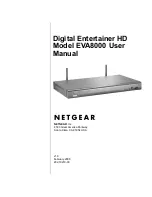
WAN Circuit Configuration—Modify
254
Model LRA2900A RAS Administrators’ Reference Guide
21 • T1/E1 Link
•
other(1) —Link is disabled
•
dsx1ESF(2)—Extended Superframe DS1
•
dsx1D4(3)—AT&T D4 format DS1
•
dsx1E1(4)—Based on CCITT/ITU G.704 without CRC
•
dsx1E1-CRC(5)—Based on CCITT/ITU G.704 with CRC
•
dsx1E1-MF(6)—Based on CCITT/ITU G.704 with TS16 multiframing, without CRC
•
dsx1E1-CRC-MF(7)—Based on CCITT/ITU G.704 with TS16 multiframing, with CRC
Line Coding (dsx1LineCoding)
This variable describes the type of Zero Code Suppression used on the link, which in turn affects a number of
its characteristics.
•
dsx1JBZS(1)—Jammed Bit Zero Suppression, in which the AT&T specification of at least one pulse every 8
bit periods is literally implemented by forcing a pulse in bit 8 of each channel. Thus, only seven bits per
channel, or 1.344 Mbps, is available for data. This feature is not currently implemented.
•
dsx1B8ZS (2)—The use of a specified pattern of normal bits and bipolar violations which are used to
replace a sequence of eight zero bits.
•
dsx1HDB3(3)—High Density Bipolar Order 3. It is based on AMI but extends this by inserting violation
codes whenever there is a run of 4 or more 0s.
•
dsx1ZBTSI(4)—May use dsx1ZBTSI, or Zero Byte Time Slot Interchange. This feature is not currently
implemented.
•
dsx1AMI(5)—Alternate Mark Inversion. Refers to a mode wherein no zero code suppression is present and
the line encoding does not solve the problem directly. In this application, the higher layer must provide data
which meets or exceeds the pulse density requirements, such as inverting HDLC data.
•
other(6)—This feature is not currently supported.
Receive Equalizer (linkRxEqualizer)
This variable determines the equalization used on the received signal. Long haul signals should have the equal-
ization set for more. Short haul signals require less equalization.
•
linkRxEqualizerOff(1)
•
linkRxEqualizerOn(2)
Line Build Out (linkLineBuildOut)
This variable is used in T1 applications to adjust the T1 pulse shape at the cross connect point. Select the pulse
strength needed to minimize distortion at the remote T1 receiver end. The default is t1pulse0dB, which should
be adequate for most situations.
•
triState(0)
•
e1pulse(1)
•
t1pulse0dB(2)—Strong pulse shape.
Summary of Contents for LRA 2900
Page 29: ...Contents Model LRA2900A RAS Administrators Reference Guide 29 ...
Page 33: ...About this guide Model LRA2900A RAS Administrators Reference Guide 33 ...
Page 63: ...5 Authentication Model LRA2900A RAS Administrators Reference Guide 63 Modify Static User ...
Page 72: ...72 Model LRA2900A RAS Administrators Reference Guide 7 Dial In ...
Page 201: ...16 MFR Version 2 Model LRA2900A RAS Administrators Reference Guide 201 ...
Page 211: ...16 MFR Version 2 Model LRA2900A RAS Administrators Reference Guide 211 MFR Version 2 Modify ...
Page 268: ...268 Chapter 22 About Chapter contents Introduction 269 Black Box contact information 269 ...
Page 273: ...23 License Model LRA2900A RAS Administrators Reference Guide 273 End User License Agreement ...
Page 278: ...278 Appendix B MIB trees Chapter contents Model LRA 2900 MIB Tree Structure 279 ...
















































